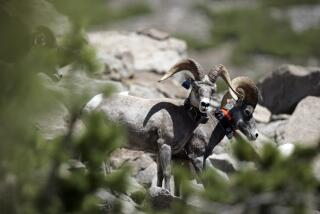Cattle Disease Report Backs Killing of Yellowstone Bison
- Share via
HELENA, Mont. — Montana cattle herds face a small but serious risk from diseased Yellowstone National Park bison, says a National Academy of Sciences report that bolsters the state’s rationale for shooting bison that wander outside the park.
Last winter, nearly 1,100 bison that roamed outside the park’s borders were shot in Montana or shipped to slaughter in an effort to eliminate any chance of infecting domestic cattle with brucellosis, believed to be widespread among Yellowstone bison and elk.
Brucellosis can cause cattle to abort calves and can sicken people, who suffer recurring symptoms including fever, sweating and joint pains.
A critic of bison management policies, biologist D.J. Schubert of the Fund for Animals, said the draft report by the National Research Council, the principal operating arm of the academy, appears to be biased in favor of the cattle industry.
The study, released Thursday, calls for an aggressive management plan with bison quarantine zones around the park and a concerted effort to develop an effective vaccine to control or eradicate the disease in the park’s elk and bison herds.
Although vaccinations and monitoring of cattle make the risk small, the results could be catastrophic if the disease were passed to cattle, said Norman Cheville, the study’s principal investigator.
More to Read
Sign up for Essential California
The most important California stories and recommendations in your inbox every morning.
You may occasionally receive promotional content from the Los Angeles Times.










